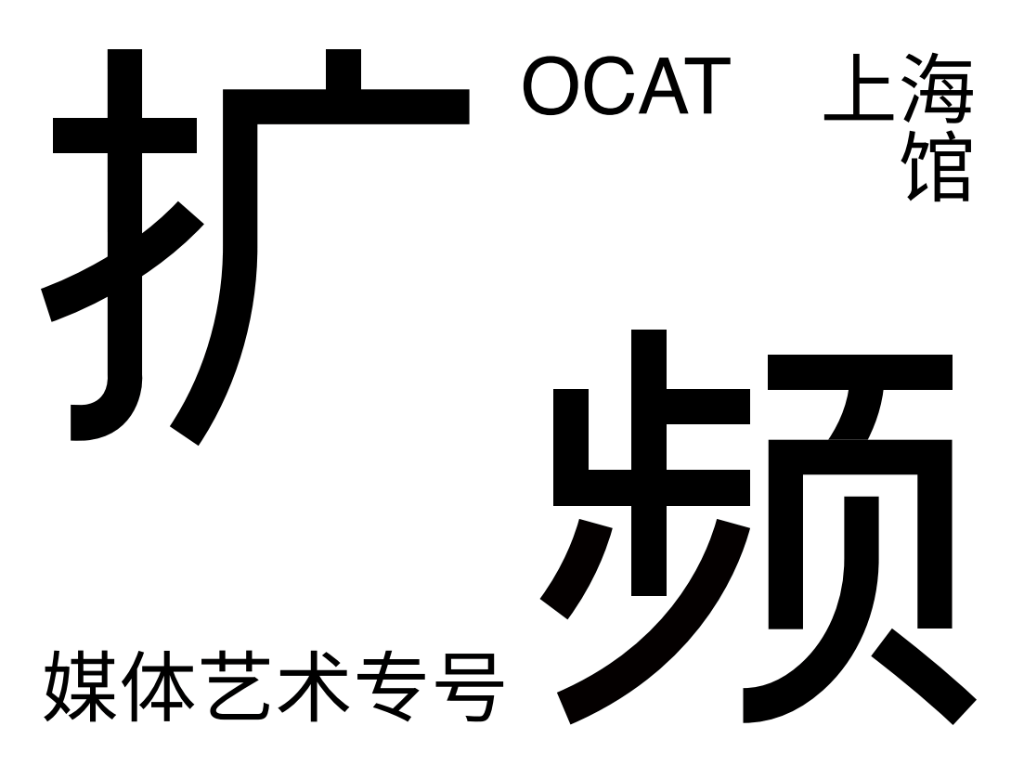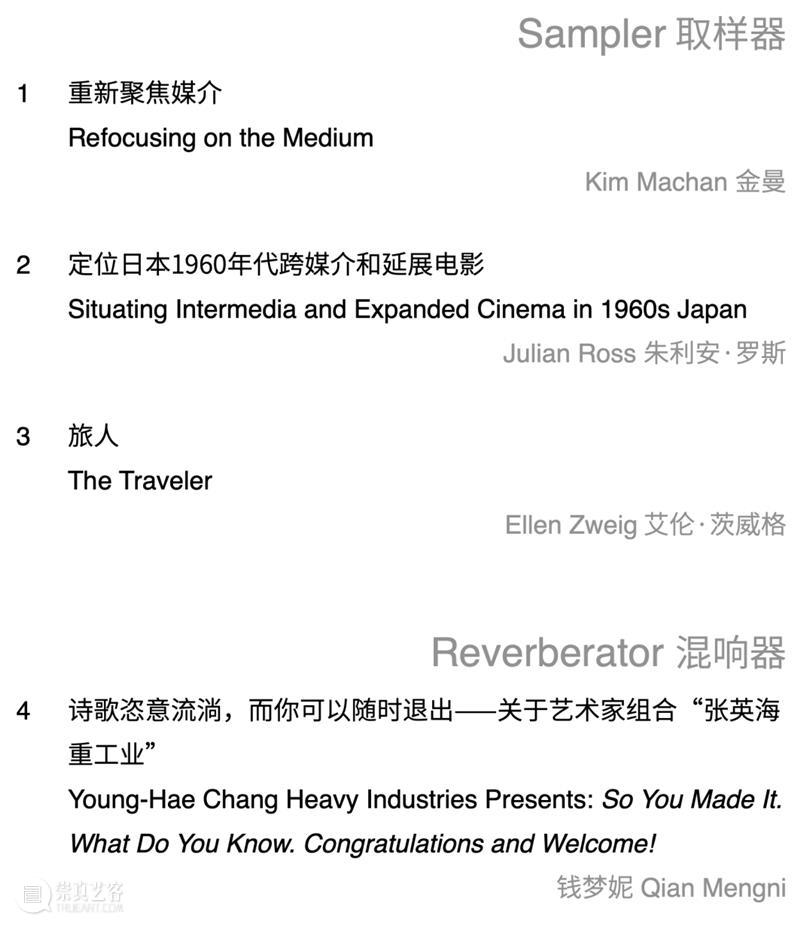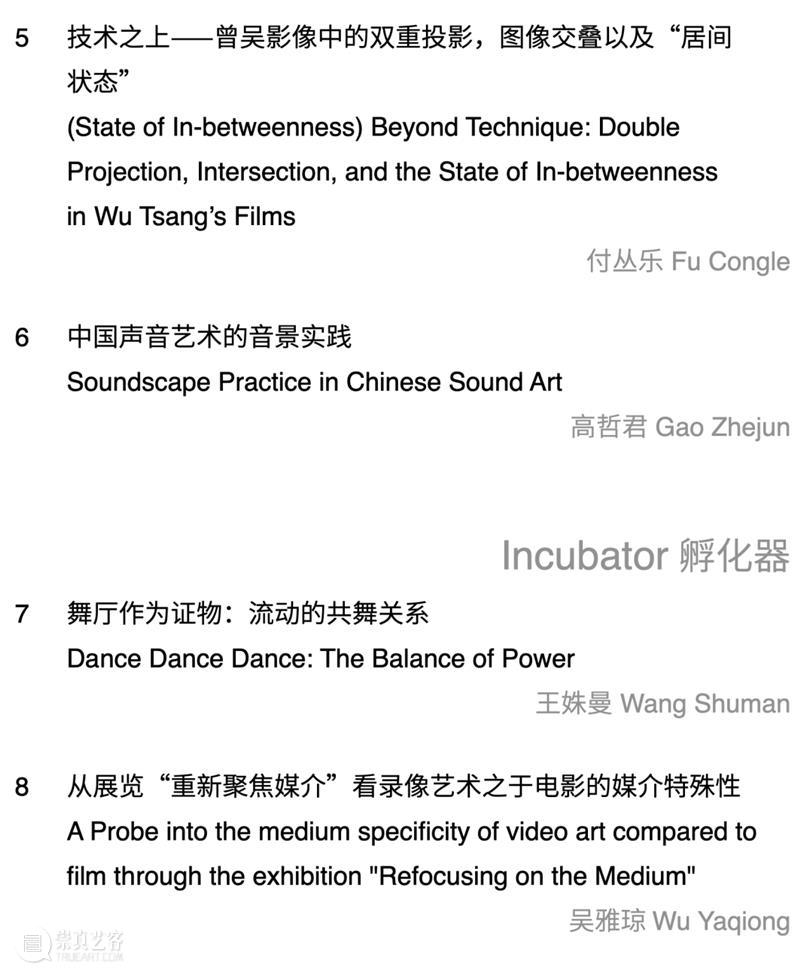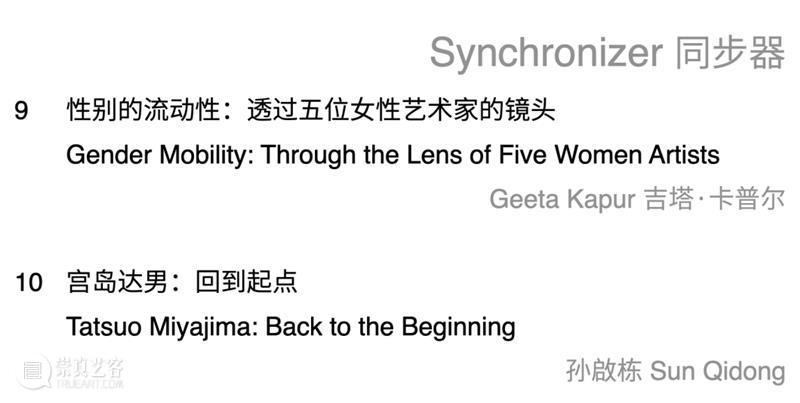【OCAT上海馆 | 扩频】朱利安 · 罗斯:定位日本1960年代跨媒介和延展电影
![]() {{newsData.publisher_name}}
{{newsData.update_time}}
浏览:{{newsData.view_count}}
{{newsData.publisher_name}}
{{newsData.update_time}}
浏览:{{newsData.view_count}}
来源 | {{newsData.source}} 作者 | {{newsData.author}}
临时闭馆期间,OCAT上海馆将在微信公众号阅读单元持续推送《扩频Amplifier⸺OCAT上海馆媒体艺术专号》第一期稿件,敬请关注。
During the temporary closure of OCAT Shanghai venue, we will continue to release the excerpts of Amplifier — Media Art Issue by OCAT Shanghai (Vol. 1) in the "Reading Unit" (“阅读单元”) of this WeChat official account. Please stay tuned.
《扩频》稿件节选
Amplifier Excerpts
* 本文系作者为其参与编辑的《日本扩延电影及跨媒体艺术: 1960年代重要文献》(Japanese Expanded Cinema and Intermedia: Critical Texts of the 1960s, Go Hirasawa; Julian Ross E.a. Eds., ARCHIVE BOOKS, 2021)一书所作序言。
*This article is the preface of the book Japanese Expanded Cinema and Intermedia: Critical Texts of the 1960s (Go Hirasawa; Julian Ross E.a. Eds., ARCHIVE BOOKS, 2021) co-edited by the author.
“
我在这里描述的是观众在《时代精神现象学》的首次演出中可能看到的情景,演出有两台模拟电影放映机,于1967年作为“三月地下”系列活动的一部分首次在东京自由剧场公开呈现。夹在1964年东京夏季奥运会和1970年大阪世界博览会中间,1967年标志了日本在二战中败给反法西斯同盟多年后的经济崛起时期。随着重新签署《日美安全保障条约》的临近,政治动荡正在加剧 :这一活动计划在1970年发生,正值在美国出兵越南,大学因侵吞财款而被曝光,农民被强行逐出自己的土地去建造后来的成田机场。反主流文化作为社会进步和动荡的征兆而涌现,街道成了公共表演的舞台和随性的嬉皮士(fūten)的聚会场所。负责《时代精神现象学》的艺术家宫井陆郎是这股旋风中心的知名嬉皮士,作为他那一代人的代表经常在杂志上有特写并受电视采访。他同时也是一个艺术家和评论家,致力于塑造日本艺术群体的话语和实践,尤其是新兴的延展电影运动,该运动后来成了他和其他艺术家在未来几年的艺术实践中不可或缺的组成部分。
“
What I describe here is what an audience might have seen on the first occasion that Phenomenology of Zeitgeist (Jidai seishin no genshōgaku, 1967), a performance with two analogue film projectors, was presented to the public in Jiyū gekijō in Tokyo, as part of their event series Sangatsu no angura (The Underground in March) in 1967. Sandwiched between the 1964 Summer Olympics in Tokyo and the 1970 World Exposition in Osaka, 1967 in Japan marks a period of economic ascendance years after their defeat against the Allied forces in World War II. Political unrest is on the rise as the re-signing of the Anpo US-Japan Security Treaty approaches: scheduled for 1970, this event is set to occur in a moment when American military forces are in Vietnam, universities have been exposed for their misappropriation of money, and farmers are being forcibly ejected from their land to build what will become Narita airport. Counterculture is in emergence as a symptom of social progress and unrest, with the streets becoming a stage for public performances and a site for casual hippies (fūten) hangouts. Miyai Rikurō, the artist responsible for Phenomenology of Zeitgeist, sits at the center of this whirlwind as a well-known hippie, regularly featured in magazines and interviewed on television as a representative of his generation, but also as an artist and critic active in shaping the discourse and practice of the Japanese art community, and particularly that of the emerging movement of Expanded Cinema
that was to become an integral part of his and others' artistic practice in the years to come.
“
随着“日本延展电影”的作品受到更多关注,我们有必要将这些作品置于他们成型的本土背景中去。仅仅应用诸如“跨媒介”和“延展电影”等附属于欧美语境术语的定义,会削弱这些词汇在到达日本艺术群体之时以及之后的批判讨论。考虑到这一点,我们扪心自问 :延展电影在日本成为一种现象的批评背景和艺术背景是什么?日本评论家是如何分析这些作品的,活动组织者是如何宣传的?日本艺术家是如何描述他们自己和其他同行的作品的?虽然日本艺术家和评论人使用“跨媒介”和“延展电影”这类外来词,但是对这些术语的解释通常会因人而异。
“
As more attention has been placed on works of Japanese Expanded Cinema, it has become necessary to situate them within the local context in which they emerged. To simply apply the definitions of rms such as "intermedia" and "expanded cinema" as they pertain to the American and European discourse would be to reduce the critical debates involving these terms upon and after their arrival into the Japanese art community. With this in mind, we asked ourselves: What was the critical and artistic context in which Expanded Cinema became a phenomenon in Japan? How were Japanese critics analyzing these works and how were event organizers promoting them? How did Japanese artists describe their own and other peers'works? While Japanese artists and critics used the terms "intermedia" and "expanded cinema" as loanwords, the interpretation of the terms often varied according to who used them.
“
延展电影的呈现通常为单次活动并鲜少留下记录,是一个有挑战的历史研究对象。延展电影囊括电影、表演和装置的特征,很少被保护、归档,甚至记录。电影的普遍路径是作为作品加入发行目录然后最终进入电影档案。对于艺术作品,通常会由艺术家或者是其代理人(通过画廊或者遗产管理委员会)售卖或者捐赠给私人收藏或者美术馆收藏。虽然这仍然是一个挑战,但最近表演性作品连同必要的说明、材料和记录一起被纳入到收藏当中。
“
Often presented as one-off events and leaving sparse documentation, expanded cinema is a challenging object of historical study. Incorporating characteristics of film, performance, and installation, expanded cinema has rarely been preserved, archived, or even documented. The common route for cinema would be for a work to enter a distribution catalogue and eventually a film archive. In the case of an artwork, the art object would usually be sold or donated to a private collection or a museum collection by the artist or his or her representation (whether a gallery or an estate). While it remains a challenge, performance works have more recently been acquired into collections, together with the necessary instructions, materials, and documentation.
Scroll down to the bottom for the full text
朱利安 · 罗斯,研究者、策展人及写作者,现居阿姆斯特丹。他在鹿特丹国际电影节担任节目策划,同时也是荷兰莱顿大学社会人文研究中心(LUCAS)的助理教授。他还是洛迦诺国际电影节的评选委员会成员(2019-2020),曾为泰特现代美术馆、芝加哥艺术学院、鹿特丹美术馆、布鲁塞尔美属宫、阿姆斯特丹Eye电影美术馆、东京都写真美术馆、芳草地艺术中心、选集电影资料馆、哈佛电影资料馆和英国电影协会策划与电影相关的项目、展览和表演。罗斯是《日本扩延电影及跨媒体艺术: 1960年代重要文献》的主编之一,也是展览“电影之外:城之内元晴和田名网敬一”(More Than Cinema: Motoharu Jonouchi and Keiichi Tanaami,先锋工厂,2020)的联合策展人。
Julian Ross is a researcher, curator and writer based in Amsterdam. He is Programmer at International Film Festival Rotterdam and an Assistant Professor at Leiden University Centre for the Arts in Society (LUCAS). He was a selection committee member at Locarno Film Festival (2019-20) and has curated film programmes, exhibitions and performance at Tate Modern, Art Institute of Chicago, Kunsthal Rotterdam, BOZAR Centre for Fine Arts, Eye Filmmuseum, Tokyo Photographic Art Museum, Yerba Buena Center for the Arts, Anthology Film Archives, Harvard Film Archives and British Film Institute. He is the co-editor of Japanese Expanded Cinema and Intermedia: Critical Texts of the 1960s (Archive Books, 2020) and the co-curator of the exhibition More Than Cinema: Motoharu Jonouchi and Keiichi Tanaami at Pioneer Works (2020).
《扩频Amplifier⸺OCAT上海馆媒体艺术专号》每期以专题形式聚焦媒体艺术的某一特定问题领域,为媒体艺术及相关领域的研究者提供发言、讨论、推进思考的“论坛”,也为广大公众深入了解并参与媒体艺术实践提供尽可能多样的视角与工具。
Amplifier – Media Art Issue by OCAT Shanghai probes into one particular subject in the field of media art in each edition, intending to carve out a "forum" for practitioners and researchers within the fields of media art and related disciplines to make their voices heard, exchange viewpoints and further their thinking. In the meantime, it also intends to offer alternative perspectives and tools for the public to get to know and involved in media art.
点击“阅读原文”,获取《扩频》第一期PDF
Click "Read More" for Amplifier Vol.1 (PDF)
{{flexible[0].text}}

 {{newsData.good_count}}
{{newsData.good_count}}

 {{newsData.transfer_count}}
{{newsData.transfer_count}}













 分享
分享